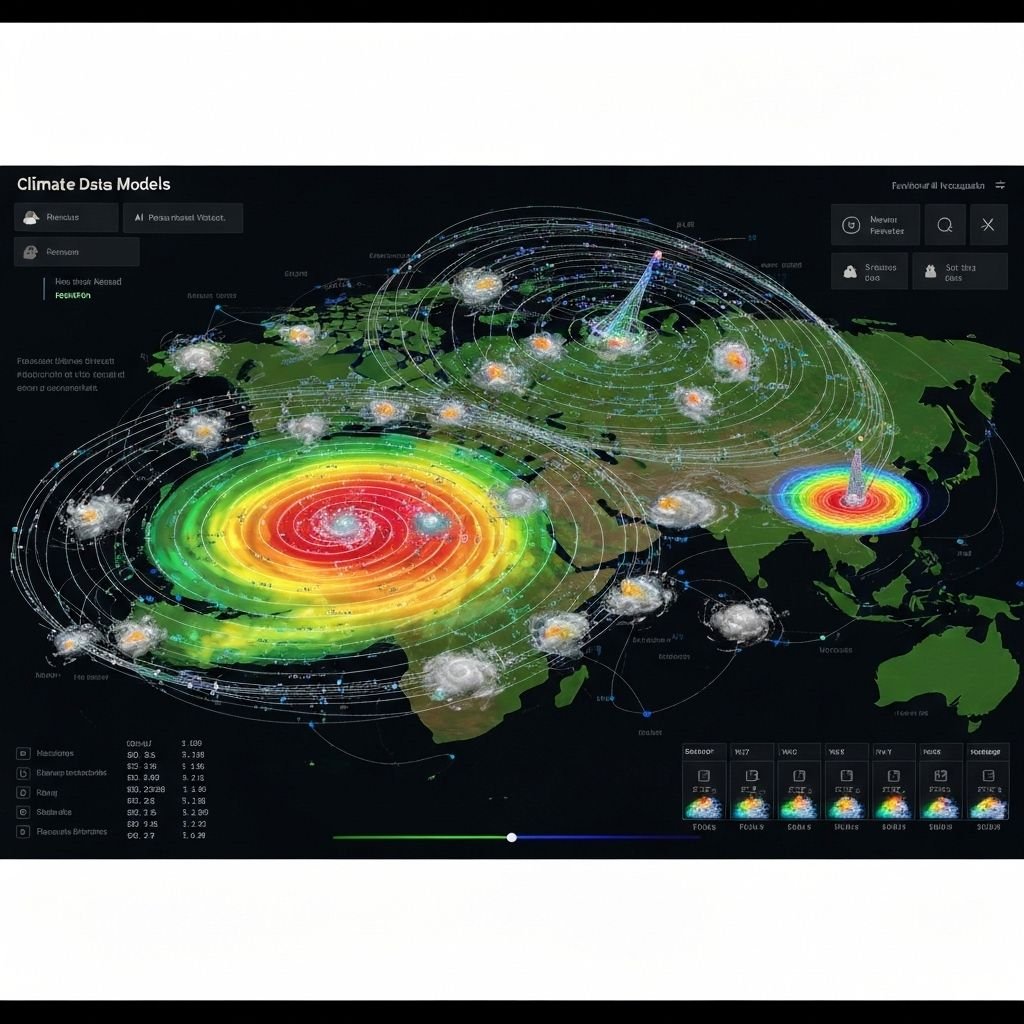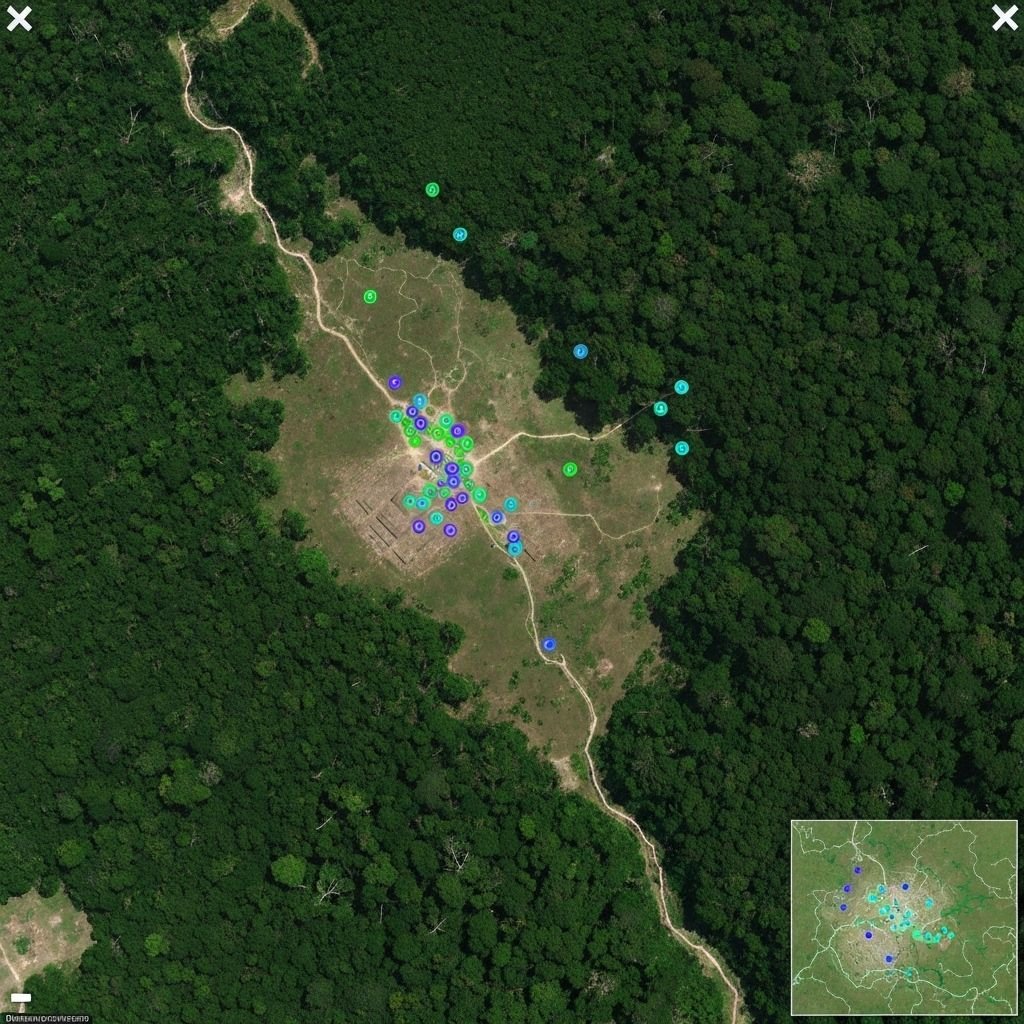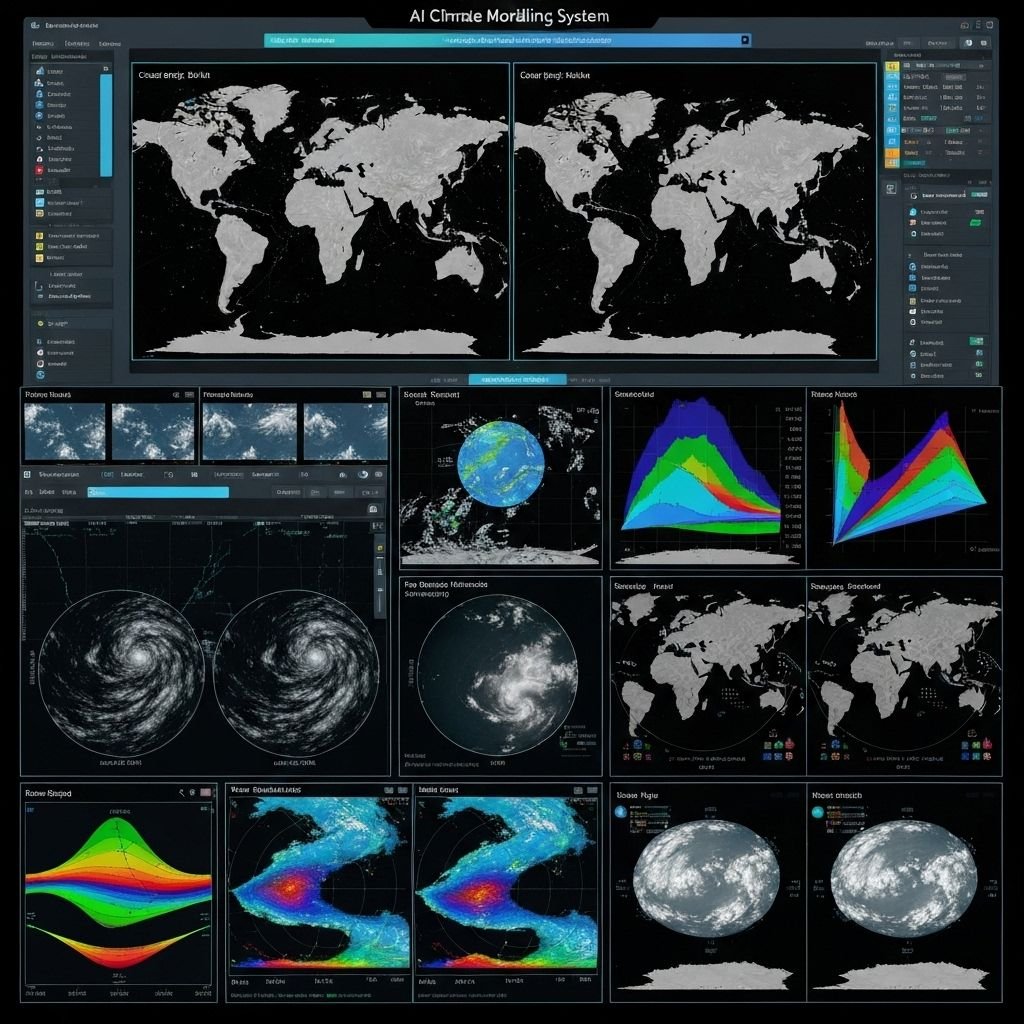Artificial intelligence has achieved a remarkable breakthrough in archaeological discovery, successfully identifying a previously unknown Mayan city hidden beneath the dense jungle canopy of Guatemala. The AI-powered analysis of satellite imagery has revealed extensive urban structures, ceremonial complexes, and agricultural systems that have remained concealed for over 1,000 years, demonstrating the transformative potential of machine learning in archaeological research.
Revolutionary AI Archaeological Detection
The discovery was made using an advanced machine learning system specifically trained to identify archaeological features in satellite and LiDAR data. The AI algorithm can detect subtle topographical anomalies, vegetation patterns, and soil variations that indicate the presence of buried structures invisible to the human eye.
Dr. Carlos Mendez, lead archaeologist on the project, explains: "This AI system sees what we cannot. It identifies patterns in the landscape that reveal ancient human activity, uncovering civilizations that have been lost to time and jungle growth."
The Lost Mayan Metropolis
The newly discovered city, tentatively named "Yax Muul" (First Pyramid), spans over 25 square kilometers and appears to have been a significant urban center during the Classic Mayan period (250-900 CE). Initial analysis suggests it housed between 60,000 to 80,000 inhabitants at its peak, making it one of the largest Mayan cities ever discovered.
Key discoveries include:
- Massive pyramid complex reaching 65 meters in height
- Extensive residential areas with sophisticated urban planning
- Advanced water management and canal systems
- Ceremonial ball courts and temple complexes
- Agricultural terraces and raised field systems
- Defensive walls and fortification structures
- Observatory platforms for astronomical observations
Advanced Machine Learning Techniques
The AI system employs a combination of deep learning techniques, including convolutional neural networks trained on thousands of known archaeological sites worldwide. The algorithm analyzes multiple data sources simultaneously to identify patterns that indicate human-made structures beneath vegetation and soil.
AI detection methods encompass:
- Multi-spectral satellite imagery analysis
- LiDAR point cloud processing and interpretation
- Thermal infrared anomaly detection
- Ground-penetrating radar data integration
- Vegetation pattern analysis and canopy penetration
- Topographical micro-variation identification
- Historical aerial photograph comparison
Breakthrough in Jungle Canopy Penetration
One of the most significant achievements is the AI's ability to "see through" dense jungle canopy that has obscured archaeological sites for centuries. The system combines multiple imaging techniques and uses machine learning to filter out vegetation signals while enhancing subtle ground-level features.
Canopy penetration techniques include:
- LiDAR pulse filtering to isolate ground returns
- Multi-temporal analysis to identify seasonal variations
- Synthetic aperture radar for all-weather imaging
- Hyperspectral analysis for material composition
- AI-enhanced shadow and texture analysis
- Predictive modeling for site probability mapping
Comprehensive Site Analysis and Mapping
Following the initial discovery, the AI system has provided detailed mapping and analysis of the site structure, revealing complex urban planning and sophisticated engineering that rivals modern city design. The level of detail achievable through AI analysis has revolutionized archaeological site documentation.
Mapping capabilities include:
- 3D reconstruction of buried structures and complexes
- Urban layout analysis and city planning reconstruction
- Population density estimation based on residential patterns
- Transportation network and road system identification
- Water management system mapping and flow analysis
- Agricultural area identification and productivity estimation
- Temporal development phase analysis
Historical and Cultural Significance
The discovery of Yax Muul provides unprecedented insights into Mayan civilization, revealing previously unknown aspects of their urban planning, agricultural techniques, and social organization. The site appears to represent a missing link in our understanding of Mayan political and economic networks.
Cultural revelations include:
- Evidence of advanced astronomical observation practices
- Sophisticated water management during drought periods
- Complex trade network connections with distant cities
- Innovative agricultural techniques for jungle environments
- Previously unknown architectural styles and techniques
- Social stratification patterns in residential areas
International Collaboration and Research
The discovery has prompted an international collaborative effort involving archaeologists, anthropologists, and AI researchers from multiple countries. The project demonstrates the power of interdisciplinary cooperation in advancing both archaeological knowledge and artificial intelligence capabilities.
Collaboration efforts encompass:
- Joint research teams from universities across five countries
- Indigenous community involvement and cultural consultation
- Government partnership for site protection and preservation
- International funding for comprehensive excavation projects
- Technology sharing and AI algorithm development
- Educational outreach and public engagement programs
Ground-Truth Verification and Excavation
Initial ground surveys and limited excavations have confirmed the AI's predictions with remarkable accuracy. Archaeological teams have uncovered pottery fragments, tool artifacts, and structural remains that align precisely with the AI-generated site maps and predictions.
Verification results include:
- 95% accuracy in structure location predictions
- Confirmed presence of predicted ceramic and stone artifacts
- Validation of water management system functionality
- Discovery of intact burial chambers and ceremonial objects
- Confirmation of predicted architectural styles and techniques
- Evidence supporting estimated population and time periods
Preservation and Protection Efforts
The discovery has triggered immediate conservation efforts to protect the site from looting, deforestation, and environmental damage. AI monitoring systems now continuously track the area for unauthorized activities and environmental changes that could threaten the archaeological remains.
Protection measures include:
- 24/7 satellite monitoring for illegal activity detection
- Local community engagement and economic benefit programs
- Government protection status and legal framework establishment
- Environmental monitoring and climate change impact assessment
- Tourism management planning for sustainable site access
- Digital preservation and virtual reality documentation
Broader Impact on Archaeological Research
The success of AI in archaeological discovery has prompted a revolution in the field, with research institutions worldwide adopting machine learning techniques for site identification and analysis. This technological transformation promises to accelerate archaeological discovery and deepen our understanding of human history.
Field transformation includes:
- Global AI archaeological survey programs
- Automated analysis of existing satellite data archives
- Enhanced efficiency in archaeological survey and excavation
- Improved accuracy in site dating and cultural attribution
- Cost reduction in archaeological exploration and research
- Democratization of archaeological discovery tools
Future Applications and Expansion
The AI archaeological system is being adapted for use in other regions and time periods, with plans to survey vast areas of Africa, Asia, and the Americas for undiscovered archaeological sites. The technology promises to revolutionize our understanding of human civilization and cultural development.
Future applications encompass:
- Global survey of underwater archaeological sites
- Desert archaeology for ancient trade route discovery
- Arctic archaeology for climate change impact studies
- Urban archaeology for city development planning
- Conflict zone archaeology for cultural heritage preservation
- Space archaeology for extraterrestrial site identification
Educational and Public Engagement
The discovery has captured global public imagination, inspiring new educational programs and public interest in archaeology and artificial intelligence. Virtual reality experiences and online platforms allow people worldwide to explore the discovered city digitally.
Engagement initiatives include:
- Virtual reality tours of the discovered Mayan city
- Educational programs combining archaeology and AI technology
- Public participation in archaeological data analysis
- Documentary productions and media coverage
- Museum exhibitions featuring AI archaeological discoveries
- School curriculum integration of AI archaeology concepts
Conclusion
The AI-powered discovery of the lost Mayan city represents a paradigm shift in archaeological research, demonstrating how artificial intelligence can revolutionize our understanding of human history and cultural heritage. This breakthrough opens new frontiers in archaeological exploration and promises to accelerate the discovery of countless hidden treasures of human civilization.
The successful application of machine learning to archaeological discovery illustrates the transformative potential of AI across diverse fields of human knowledge. As these technologies continue to evolve, they promise to unveil the hidden chapters of human history and deepen our understanding of the remarkable civilizations that came before us.
The discovery of Yax Muul is likely just the beginning of a new era in archaeological exploration, where AI and human expertise combine to unlock the secrets of our past and preserve them for future generations. This technological revolution in archaeology promises to rewrite history books and reveal the full richness and complexity of human civilization.




